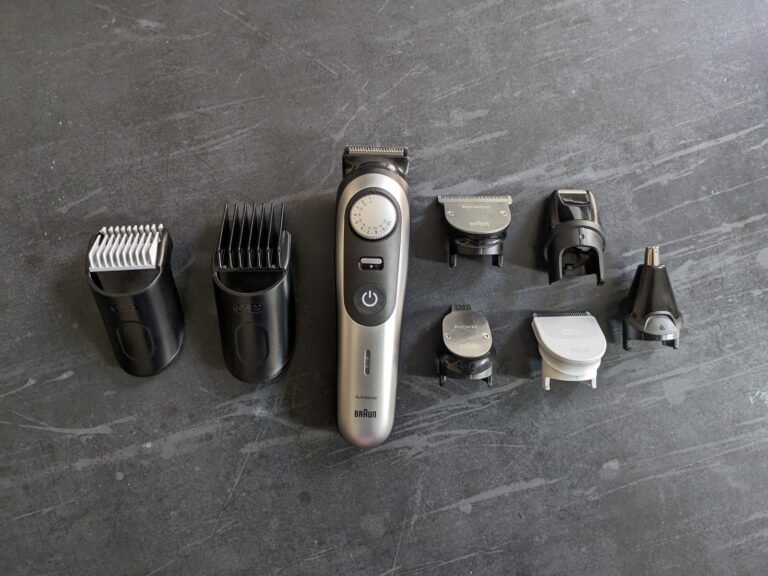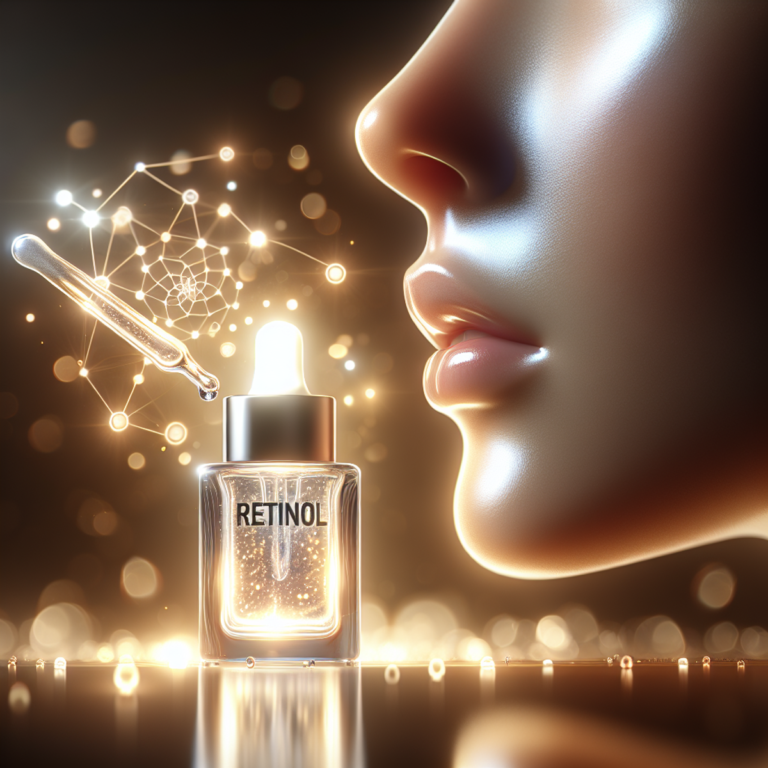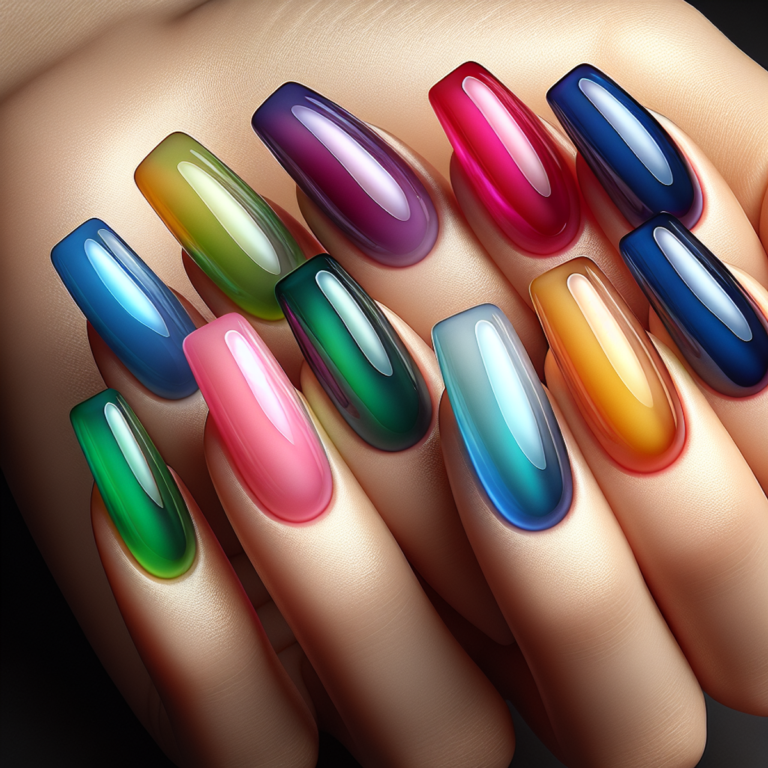How to Treat a Pimple In Your Nose, According to Derms

Introduction
Having a pimple in your nose can be both uncomfortable and frustrating. These annoying spots often appear when oil glands get blocked due to a buildup of oil, dead skin cells, bacteria like P. acnes and S. aureus, or even ingrown hairs. Common types of pimples that show up inside the nose include:
- Whiteheads
- Papules
- Pustules
- Cysts
- Boils/abscesses
Understanding what causes these nasal breakouts is key to managing and treating them effectively. Dermatologists stress the importance of not picking or popping these pimples to avoid making things worse.
In this article, we’ll share expert advice on how to treat a pimple in your nose, according to derms. We’ll cover everything from identifying different types of nasal pimples to exploring at-home treatments and when it’s time to see a professional. You’ll also find tips on preventing future breakouts and lifestyle changes that promote healthy skin.
Whether you’re looking for ways to remove pimples naturally and permanently, want information about treatments for other areas like back pimples, or are interested in dealing with small bumps on the face, this guide offers comprehensive insights specifically tailored for nasal blemishes.
Understanding Pimples Inside the Nose
Pimples inside the nose can be particularly uncomfortable due to their sensitive location. Understanding how these pimples form and what distinguishes them is essential for addressing them effectively.
How Pimples Inside the Nose Form
The main causes of pimples in this area are:
- Blocked oil glands
- Bacteria
- Ingrown hairs
Sebaceous glands produce oil to moisturize your skin, but when these glands become clogged with excess oil, dead skin cells, or dirt, pimples can develop. The enclosed environment inside the nostrils can worsen this issue by creating a breeding ground for bacteria such as Propionibacterium acnes and Staphylococcus aureus, which may lead to inflammation.
Ingrown hairs also contribute to nasal pimples. When hair grows back into the skin instead of rising up from it, this can cause irritation and form a pimple-like bump.
Types of Nasal Pimples
Various types of pimples may present themselves within your nostrils, each with distinct characteristics:
- Whiteheads: Closed comedones that appear as small white or flesh-colored bumps. They occur when pores are completely blocked.
- Cysts: Larger, painful lumps filled with pus caused by deep-seated infections. These are more severe and require careful management.
- Boils/Abscesses: Painful lumps filled with pus, often larger than cysts, possibly requiring medical intervention if they do not drain naturally.
Understanding these differences not only aids in recognizing what you’re dealing with but also informs how you approach treatment. Whether you’re exploring ways on how to get rid of pimples overnight, seeking to understand how to remove pimples safely, or trying preventive strategies for future breakouts, knowing the type of pimple you’re experiencing is crucial for effective management.
Symptoms and Diagnosis
Identifying a pimple inside your nose can be tricky since this area is prone to various other conditions. Differentiating a nasal pimple from nasal polyps or infections is crucial for effective treatment. Nasal pimples typically form due to blocked oil glands, leading to painful, swollen, or red bumps. Nasal polyps, on the other hand, are soft, painless growths often associated with allergies or sinus infections. Understanding these distinctions helps you choose the right path for treatment.
Common symptoms of nasal pimples include:
- Pain: Often a sharp or throbbing sensation experienced when touching the nose.
- Swelling: Noticeable inflammation around the affected area.
- Redness: A visible change in color indicating irritation or infection.
If you’re dealing with a persistent or painful pimple, it’s important to consider professional advice on how to treat a pimple in your nose effectively.
The discomfort can sometimes resemble that caused by cystic acne — deep, inflamed cysts notorious for being stubborn and painful. Identifying such symptoms can help in seeking timely medical intervention.
For those concerned about how to get rid of pimple marks, topical treatments may offer some relief by targeting redness and inflammation. However, if you’re wondering how to get rid of pimples fast or how to remove pimple marks swiftly, consulting with a dermatologist can provide tailored solutions that address the root cause.
Navigating nasal pimples requires awareness of common symptoms and differentiating them from other nasal conditions. This understanding is key in applying appropriate home remedies or knowing when professional help is necessary.
When to Seek Professional Help and What to Expect During a Dermatologist Visit
Knowing when to seek professional help is crucial in managing pimples inside the nose effectively. Certain signs should prompt you to schedule a dermatologist consultation:
- Persistent Pain: If the discomfort continues despite at-home treatments, it might be time to consult a professional.
- Worsening Symptoms: Watch out for increasing redness, swelling, or warmth around the pimple.
- No Improvement with Over-the-Counter Treatments: If topical solutions like salicylic acid or benzoyl peroxide show no results.
A visit to a dermatologist is not only about getting rid of the current issue but also understanding how to treat a pimple in your nose, according to derms. Dermatologists play a vital role in diagnosing nasal issues accurately. They can differentiate between common acne, cystic formations, or more complex conditions that might require specific interventions.
During your appointment, expect the dermatologist to:
- Conduct a Thorough Examination: This helps in distinguishing between different types of nasal growths and determining the best course of action.
- Prescribe Targeted Treatments: Options may include topical antibiotics for bacterial infections or oral medications for more severe cases. For those wondering how to shrink a cystic pimple overnight, professionals might offer cortisone injections as a rapid solution.
The goal is not just immediate relief but also equipping you with strategies on how to get rid of zits fast and prevent future occurrences. In addition, they may provide insights on how to remove pimple scars naturally or advise on treatments like laser therapy for persistent scarring.
Understanding when professional evaluation is necessary ensures timely intervention and prevents complications. It brings clarity on how to get rid of spots effectively while maintaining skin health and avoiding frequent flare-ups.
At-Home Treatment Options for Pimples Inside the Nose
1. Gentle Cleansing Techniques
To effectively manage pimples inside your nose, it’s important to include gentle cleansing techniques in your skincare routine. The sensitive skin inside the nostrils needs careful handling to avoid irritation and more breakouts.
Recommended Products:
- Mild Cleansers: Choose products specifically designed for sensitive skin, such as those without harsh chemicals and fragrances. Look for ingredients like glycerin, known for its moisturizing properties, or aloe vera, which soothes and reduces inflammation.
- Saline Nasal Rinses: These are great for flushing out debris and bacteria that may cause clogged pores. Use a saline rinse once or twice daily to keep the nasal passages clean.
- Witch Hazel Toner: Known for its antibacterial properties, witch hazel can be used sparingly to tone the area around the nostrils, helping to reduce excess oil without over-drying.
Application Tips:
- Use Lukewarm Water: Start by rinsing your face with lukewarm water to gently open up pores.
- Apply Cleanser Gently: Using your fingertips, apply a small amount of cleanser to the affected area with light circular motions.
- Rinse Thoroughly: Make sure all cleanser residues are rinsed away with clean water to prevent irritation.
- Pat Dry: Gently pat the area dry with a soft towel; avoid rubbing to prevent aggravating pimples.
Additional Considerations:
- Maintaining a consistent skincare routine is crucial in preventing pimples from appearing not only inside your nose but also on other areas like the forehead or chin.
- Avoiding heavy oils or occlusive agents in skincare products can help prevent pore clogging, reducing the likelihood of developing new pimples.
These gentle cleansing techniques provide a solid foundation for managing nasal pimples while minimizing the risk of irritation—an essential step before trying other topical treatments like salicylic acid or benzoyl peroxide.
2. Topical Treatments: Salicylic Acid and Benzoyl Peroxide Explained
Two powerful allies in your skincare routine for nasal pimples are salicylic acid and benzoyl peroxide. Dermatologists frequently recommend these ingredients due to their proven efficacy in targeting acne at its core.
Salicylic Acid for Nasal Acne
This beta hydroxy acid (BHA) works by penetrating the pores to exfoliate from within, effectively unclogging blocked oil glands and preventing future breakouts. It’s especially beneficial for treating blackheads and whiteheads, as it dissolves the debris that causes these blemishes.
Benzoyl Peroxide
Known for its antibacterial properties, benzoyl peroxide targets the bacteria responsible for inflamed, red pimples. It’s particularly effective on pustules and cystic acne, reducing both size and redness over time.
When using these treatments, safety is key, especially in such a sensitive area as inside your nose:
- Patch Test: Before applying either ingredient directly inside the nostrils, conduct a patch test on a less sensitive area of skin to ensure no adverse reactions occur.
- Application Method: Use a cotton swab to apply a small amount of treatment directly onto the pimple. This precise application minimizes irritation and allows for targeted effectiveness.
- Frequency: Start with once-daily applications to assess tolerance, gradually increasing if needed and advised by your dermatologist.
Incorporating salicylic acid or benzoyl peroxide into your regimen can significantly enhance how you treat pimples. These ingredients also play a role in addressing related concerns such as how to remove dark spots caused by pimples or how to prevent pimples from forming initially. Remember, consistency and patience are vital when using these topical treatments.
3. Warm Compress: A Soothing Relief Method
Applying a warm compress can be an effective way to alleviate discomfort and promote healing for nasal pimples. This method helps to reduce inflammation and encourages the drainage of pus from stubborn pimples, facilitating a quicker recovery.
Step-by-Step Guide to Using a Warm Compress:
- Gather Your Materials: You’ll need a clean washcloth and warm water. Ensure the water is not too hot to avoid burning your delicate skin.
- Soak the Washcloth: Immerse the washcloth in warm water and wring out excess moisture, leaving it damp but not dripping.
- Apply to the Affected Area: Gently press the warm, damp cloth against your nose where the pimple is located. Maintain gentle pressure without applying force.
- Hold for Several Minutes: Leave the compress on for about 5-10 minutes. The warmth will help open up your pores, promoting drainage and reducing swelling.
- Repeat as Needed: You can repeat this several times a day as needed, making sure to re-soak the washcloth in warm water each time.
Emphasizing consistency in your skincare routine for nasal pimples can prevent further irritation or infection. Incorporating this soothing technique alongside gentle cleansing products for nostrils may prove beneficial in reducing pimples and maintaining healthy skin around sensitive areas like the nose.
Preventative Measures Against Future Nasal Breakouts
Avoiding triggers is key to preventing nasal pimples. These breakouts often result from habits like nose picking and aggressive rubbing, which can irritate the delicate skin inside your nostrils. To prevent these common triggers:
- Practice Gentle Nose Care: Avoid picking or scratching inside the nose. Use a soft tissue when needed and dab rather than rub to prevent irritation.
- Mindful Blowing: When blowing your nose, do it gently to avoid causing inflammation that might lead to breakouts.
1. Skincare Products to Avoid: Keeping Your Nostrils Clear from Clogs
Certain skincare products can exacerbate nasal acne by clogging pores. To keep your nostrils clear:
- Avoid Heavy Oils: Products containing mineral oil or petrolatum can be too occlusive and may trap bacteria and oils in the pores.
- Check Ingredients: Look for non-comedogenic labels on products, meaning they are less likely to block pores.
- Fragrance-Free Options: Fragrances can be irritating and contribute to inflammation, leading to breakouts.
Pro tip: Consider using lightweight moisturizers formulated with ingredients like hyaluronic acid that hydrate without clogging pores.
Incorporating these preventative measures into your routine helps reduce the frequency of nasal breakouts. By understanding what exacerbates pimples in this area and adjusting your skincare products accordingly, you’ll maintain clearer skin and minimize discomfort.
Lifestyle Changes That Support Healthy Skin Overall
1. Hydration Importance: How Water Intake Affects Your Skin’s Condition
Proper hydration is crucial for maintaining healthy skin and preventing issues like pimples, including those pesky under-the-skin types. Drinking enough water helps regulate oil production, which can reduce the likelihood of clogged pores and subsequent breakouts. For those looking to achieve a clear complexion, ensuring your body is well-hydrated is a simple yet effective strategy.
Benefits of Hydration for Acne-Prone Skin:
- Balanced Oil Production: Adequate water intake keeps your skin hydrated from within, balancing oil levels and potentially reducing excess sebum that clogs pores.
- Improved Healing: Well-hydrated skin can repair itself more efficiently, aiding in the reduction of red marks left by spots and improving pimple scar removal.
- Detoxification: Water helps flush out toxins from your body, which can indirectly affect skin health by reducing the occurrence of unwanted bumps on your face or legs.
For those struggling with persistent pimples or trying to figure out how to get rid of a pimple in an hour, hydration alone might not be enough. However, it serves as a foundational practice to support other treatments effectively.
2. Diet: Fueling Your Skin’s Health
A balanced diet plays a crucial role in skin health. Incorporating foods rich in antioxidants, vitamins, and essential fatty acids can support skin vitality and resilience against breakouts.
Key Dietary Tips for Clear Complexion:
- Include Omega-3 Fatty Acids: Found in fish like salmon or flaxseeds, omega-3s have anti-inflammatory properties that can help reduce redness and swelling associated with acne.
- Antioxidant-Rich Foods: Berries, spinach, and nuts are excellent sources that can prevent skin damage caused by free radicals.
- Limit Processed Sugars: High sugar intake is linked to increased insulin levels which can trigger acne flare-ups. Reducing sugar might help those wondering how to prevent pimples on the face forever.
Combining these dietary habits with adequate hydration maximizes their benefits, creating an internal environment conducive to healthier skin.
3. Stress Management Techniques: Finding Balance Amidst Breakout Woes
Stress is often an underrated factor in skin health. Increased stress levels can exacerbate acne, making it vital to incorporate stress management techniques into your routine.
Practical Stress Reducing Methods:
- Mindfulness Meditation: Regular practice can reduce stress hormones that contribute to acne flare-ups.
- Yoga Practice: This not only aids in stress relief but also improves circulation, enhancing nutrient delivery to skin cells.
Taking time for self-care through these practices might not directly answer how to remove blackheads and whiteheads permanently but contributes significantly to overall skin health.
Embracing lifestyle changes that include proper hydration, diet adjustments, and stress management will undoubtedly support your journey towards clearer and healthier skin.
2. Stress Management Techniques: Finding Balance Amidst Breakout Woes
Stress is a well-known trigger for various skin issues, including acne flare-ups and the appearance of pimples inside the nose. When stress levels rise, your body produces more cortisol, a hormone that can increase oil production in your skin, leading to clogged pores and breakouts.
Practice Mindfulness Meditation and Yoga
Mindfulness meditation and yoga are powerful tools for reducing stress. Both practices focus on deep breathing and relaxation, helping to calm your mind and reduce the physical effects of stress on your body. Regular practice can aid in achieving a clearer complexion by controlling stress-induced oil production.
Follow a Skin-Healthy Diet
Diet also plays a crucial role in managing stress-related skin issues. A skin health diet rich in antioxidants, such as those found in fruits and vegetables, promotes healing and reduces inflammation throughout the body. Incorporating these foods into your meals can enhance skin resilience against stressors.
By integrating these techniques into your daily routine, you not only support better mental health but also contribute to healthier skin overall. Whether you’re looking to reduce pimple redness in five minutes or find effective home remedies for pimples, managing stress effectively can be a vital part of your skincare strategy.
Conclusion
Dealing with pimples inside your nose can be challenging. Consulting with dermatologists is crucial if you frequently experience painful or persistent outbreaks, ensuring you receive tailored advice on how to treat a pimple in your nose effectively.
Embrace the uniqueness of your features while prioritizing self-care routines that cater specifically to this delicate area. Whether exploring the best cream to remove pimple marks fast or understanding the best way to get rid of pimples, focusing on personalized skincare strategies pays off. Remember, the principles of treating nasal pimples can also apply to other areas, such as exploring pimples on buttocks treatment. Each step towards better skin health brings you closer to achieving a clear and comfortable complexion.
FAQs (Frequently Asked Questions)
What causes pimples inside the nose?
Pimples inside the nose can be caused by blocked oil glands, bacteria, and ingrown hairs. These factors contribute to the formation of different types of pimples, such as whiteheads and cysts.
How can I identify a pimple in my nose?
Common symptoms of a pimple in the nose include pain, swelling, and redness. It’s important to differentiate between a pimple and other conditions like nasal polyps or infections.
When should I seek professional help for a pimple in my nose?
You should consider consulting a dermatologist if you experience persistent pain, worsening symptoms, or if the pimple does not improve with at-home treatments.
What are some effective at-home treatment options for nasal pimples?
At-home treatment options include gentle cleansing techniques using mild cleansers, topical treatments like salicylic acid and benzoyl peroxide, and warm compress applications for soothing relief.
How do salicylic acid and benzoyl peroxide work for treating nasal pimples?
Salicylic acid helps to exfoliate the skin and unclog pores, while benzoyl peroxide has antibacterial properties that reduce acne-causing bacteria. Both are effective in managing nasal pimples when applied carefully.
What should I do if a pimple in my nose doesn’t go away?
If a pimple in your nose persists despite at-home treatments, it’s advisable to schedule an appointment with a dermatologist who can provide a proper diagnosis and recommend appropriate treatments.










